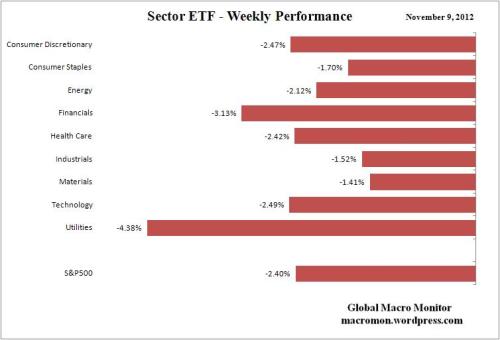Investing in exchange-traded funds (ETFs) has become increasingly popular among investors looking for diversified and cost-effective investment options. Among the various types of ETFs, trend following ETFs have gained significant attention for their ability to generate attractive returns by identifying and capitalizing on market trends.
In this article, we will explore the world of trend following ETFs, assess their performance in different market conditions, compare different types of trend following strategies, analyze success stories of trend following ETFs, provide insights on implementing these ETFs into your investment strategy, discuss potential challenges and limitations, and speculate on the future of trend following ETFs.
Assessing the Performance of Trend Following ETFs in Different Market Conditions
Trend following ETFs excel in various market conditions. In bull markets, they maximize returns by identifying upward trends and minimizing losses during corrections. During bear markets or economic downturns, these ETFs adapt and protect investments from significant losses by quickly responding to downward trends.
Additionally, trend following ETFs provide stability and diversification in volatile markets by actively tracking trends across multiple asset classes. Overall, they offer investors consistent performance and the potential for attractive returns across different scenarios.
Table: Performance of Trend Following ETFs in Different Market Conditions
| Market Condition | Performance |
|---|---|
| Bull Markets | Maximize returns by capturing upward trends |
| Bear Markets | Adaptability to protect investments from significant losses |
| Volatile Markets | Stability and diversification across multiple asset classes |
Note: The table above summarizes the performance of trend following ETFs in different market conditions, highlighting their strengths and benefits in each scenario.
Comparing Different Types of Trend Following ETFs
Trend following ETFs employ different methodologies to identify and capitalize on market trends. Some use quantitative models and algorithms, while others rely on expert judgment. Both systematic and discretionary strategies have their merits, depending on investors’ risk tolerance and preference for active or passive management.
Factors such as expense ratios, liquidity, AUM, historical performance, tracking error, and correlation with benchmark indices should be evaluated when comparing trend following ETFs. Lower expense ratios and higher liquidity can enhance returns and facilitate trading. AUM reflects investor confidence in a fund’s strategy.
Historical performance provides insight but does not guarantee future results.
Tracking error measures how closely an ETF follows its intended strategy, while correlation indicates exposure to market trends. By considering these factors, investors can make informed decisions when selecting the most suitable trend following ETF for their investment goals.
Understanding these nuances enables investors to build a well-rounded portfolio aligned with their objectives.
Success Stories of Trend Following ETFs
Examining success stories of trend following ETFs provides valuable insights into their potential returns. By analyzing high-performing funds’ investment strategies, historical performance during market fluctuations, expense ratios, liquidity, and assets under management (AUM), investors can understand what makes these funds successful.
Case studies highlight unique methodologies and approaches employed by these funds, empowering investors to make informed decisions aligned with their investment goals.
| Factor | Consideration |
|---|---|
| Investment Strategy | Analyzing methodology and approach |
| Historical Performance | Reviewing performance during market fluctuations |
| Expense Ratios | Comparing costs of different funds |
| Liquidity | Assessing ease of buying and selling shares |
| Assets Under Management (AUM) | Evaluating fund popularity and sustainability |
Implementing Trend Following ETFs in Your Investment Strategy
To maximize the benefits of trend following ETFs, it is crucial to strategically incorporate them into a diversified investment portfolio. This section explores allocation strategies that consider risk tolerance, investment goals, and other factors for optimal results.
Determining the appropriate asset allocation requires careful consideration of risk tolerance, time horizon, and investment objectives. By balancing potential returns and volatility, you can align your portfolio with your desired level of risk.
Monitoring and adjusting your investment strategy is essential when using trend following ETFs. Actively track performance, identify market trends, and make timely adjustments to optimize returns.
Implementing a systematic approach to monitoring and adjusting investments can facilitate this process. Set parameters based on indicators or signals and stay informed about market trends for better decision-making.
While trend following ETFs offer growth opportunities, they come with risks. Conduct thorough research, seek professional advice if needed, and carefully integrate trend following ETFs into your overall investment plan.
Potential Challenges and Limitations of Trend Following ETFs
Relying solely on trend following ETFs comes with potential challenges. One concern is lagging indicators, which may not accurately predict future movements. False signals can also lead to incorrect investment decisions. Diversification and active management help mitigate risks.
Combining different asset classes spreads risk, while actively adjusting exposure levels adapts to market conditions. Considering correlation between trend following ETFs further enhances risk management. Being aware of these challenges empowers investors to make informed decisions and navigate the dynamic market landscape effectively.
Conclusion: The Future of Trend Following ETFs
[lyte id=’uQP2z4OXMRo’]





